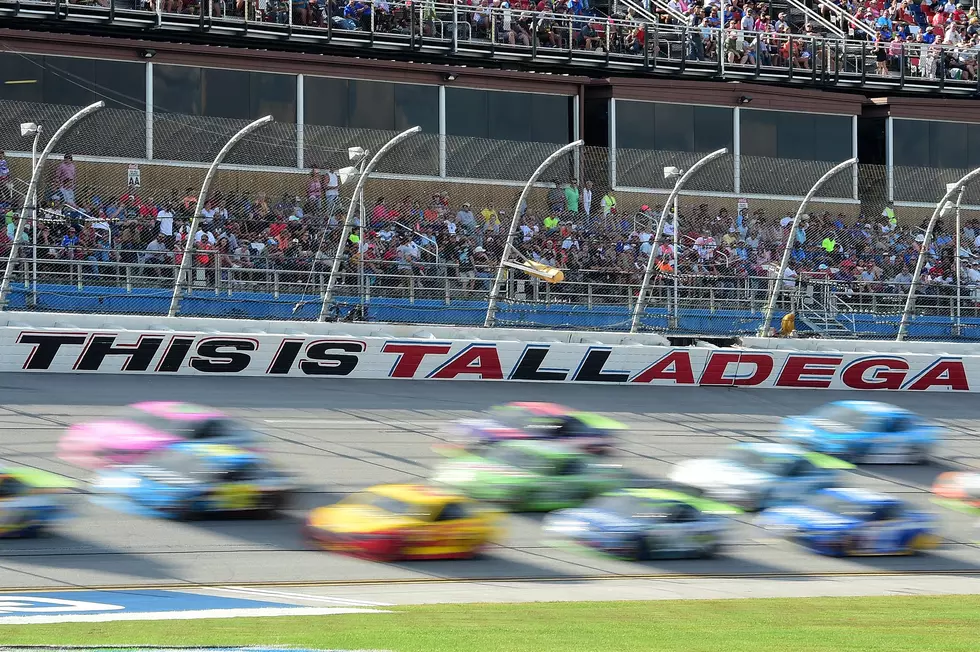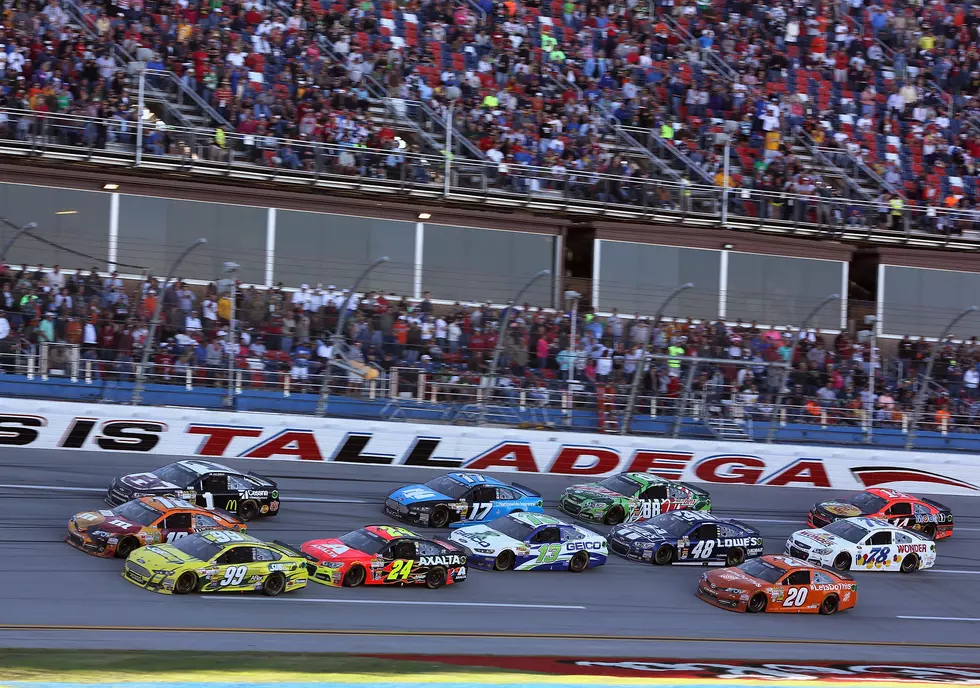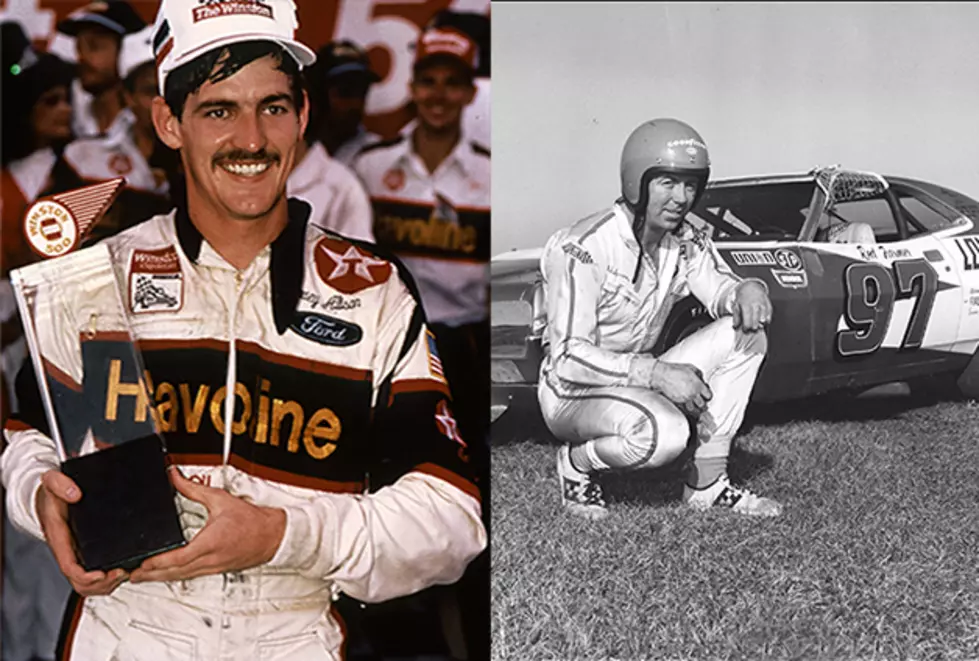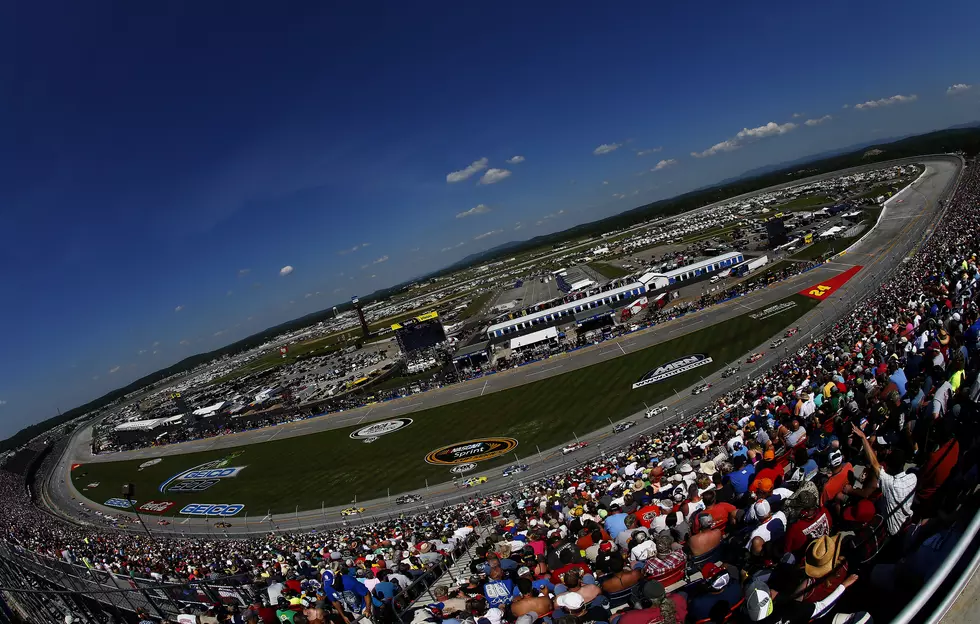
Birmingham Landmark Now Featured on Winner’s Trophy at Talladega
As kids, when we'd drive to Birmingham to shop, my brother and I would scan the skyline as soon as we entered the city, looking for the statue of Vulcan.
There he stood, the largest cast iron statue in the world, and the city symbol of Birmingham. The 56-foot tall statue that we always called "The Iron Man" depicts the Roman god Vulcan, god of the fire and forge and reflects the city's roots in the iron and steel industry.
The driver who is fastest on the final lap of Sunday’s Hellmann’s 500 NASCAR Sprint Cup Series race at Talladega Superspeedway will be appropriately awarded with the new Vulcan Trophy, a miniature version of the famous cast-iron statue.
A press release from Talladega reads,
The Vulcan Trophy is a one-of-a-kind, handmade work of art created out of solid iron. It is nearly 3 feet tall and weighs nearly 80 pounds. It is the conception of Marshall Christie, the Director of Metal Arts at Sloss Furnaces in Birmingham, and Lead Sculptor/Artist in Residence Ajene Williams. The figure sits on an aluminum and stainless steel base that was created by Bruce Griffin (Griffin Laser) of Lincoln, as well as Steve Kirk (Advance Laser Machine) of Munford.
The design and resemblance of the Talladega Superspeedway (TSS) Vulcan Trophy is identical to the actual 56-foot colossal Vulcan statue that looms tall over Birmingham. The world’s largest iron-ore statue pays homage to the city’s roots in the iron and steel industry, with its depiction of the Roman god of fire and forge. The main attraction at Vulcan® Park and Museum, the statue stands on a 124-foot sandstone pedestal, bringing the height of the entire structure to 180 feet, and weighs more than 100,000 pounds. The statue was produced with local iron and was Birmingham’s entry at the 1904 World’s Fair in St. Louis.
Talladega Superspeedway’s history with Vulcan dates to 1969, the year the mammoth 2.66-mile venue opened. A month after the first NASCAR race was held at the track, the ARCA Racing series came to TSS for the Vulcan 500, which was won by Jim Vandiver. A year later, Ramo Stott was victorious in the second Vulcan 500 ARCA event at TSS.
“There is no other race track in the world like Talladega, and now we can say there is no other trophy in the world like the Talladega Vulcan Trophy,” Talladega Superspeedway Chairman Grant Lynch said. “This trophy represents so much of what our venue is about: big, bold and tough.
“What these incredible metal artists have created is something that means so much to our local community, Birmingham and our state. I know the Vulcan Trophy will be a piece that the winning driver in Sunday’s Hellmann's 500 will cherish and covet. It’s original and the rarest of rare. Our history with Vulcan goes back to the beginning here, and we are just so proud of this.”
Vulcan has overlooked Alabama’s largest city from atop Red Mountain since the 1930s. Birmingham, founded in 1871, is unique because it contains coal, iron ore and limestone, the raw materials for making iron and steel. Three items are unique to Vulcan, who made weapons and armor for all the gods. His hammer and anvil were used in his forge (shop where metal is heated and hammered into useful items), and the spear is a piece of his completed work that he held high and admired.
“Having our beloved Vulcan replicated as the grand prize trophy for the Hellmann’s 500 links two vital aspects of our cultural heritage: Alabama’s racing legacy and the iron and steel industry,” said Darlene Negrotto, President & CEO of Vulcan Park & Museum. “We are delighted that Vulcan will have such a place of honor with one of our state’s most prominent and exciting venues.”
Sloss Furnaces, with its web of pipes and tall smokestacks, serves as an interpretive museum of industry and hosts the nationally recognized Metal Arts program. It is a National Historic Landmark, operating as a pig iron-producing blast furnace from 1882 to 1971. After closing it became one of the first industrial sites (and the only blast furnace) in the U.S. to be preserved and restored for public use.
The Hellmann’s 500 is set to begin at 1 p.m. CDT Sunday. The Hellmann’s 500 is the Round of 12 elimination race in the Chase for the NASCAR Sprint Cup where the field of competitors eligible for the season-ending championship will be reduced from 12 to eight at the checkered flag. Talladega Superspeedway’s action-packed weekend kicks off on Friday with practice sessions for both the fred’s 250 Powered by Coca-Cola NASCAR Camping World Truck Series (NCWTS) and Hellmann’s 500. Saturday’s schedule includes qualifying for the fred’s 250 Powered by Coca-Cola (9:30 a.m. CDT) and Foodland/Food Giant Qualifying for the Hellmann’s 500 (3 p.m. CDT). The fred’s 250 Powered by Coca-Cola (the Round of 8 Elimination race in the NCWTS Chase) gets the green flag at Noon CDT.
More From 95.3 The Bear









